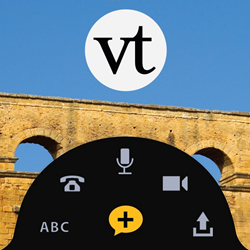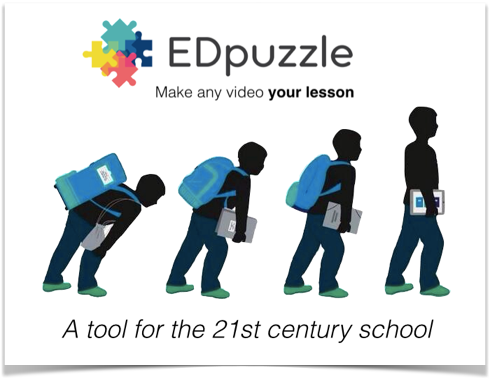Russell had a very peculiar way of starting the class today. He talked in Chinese and French and I thought to myself 'Oh my God! this morning I can't understand a word in English' Well, I'm only joking. This was just the introduction of the activity he prepared for us.
He told us about how he learnt French and I was very amazed when he said that he had a speaking B2 level and an A2 writing level and that is because he learnt the grammar when he needed it, and his main aim was learning to speak the language. But what I really found out is that he had something that most of the time our students don't have, which is motivation, enthusiasm and he was really willing to learn, not just get a certificate.
In groups we answered the question: How do you learn a language? and these are some of our answers:
- Exposure to the language.
- Living in the country, but always being receptive to learn.
- It's a matter of wish and motivation.
- It's all about communication and talking to people.
- You learn the language by speaking and listening.
- It's a kind of survival.
- The target is to be determined to learn a language.
- You also have to have language aptitudes to learn a language and good habits in terms of language learning.
- A piece of advice that somebody told us from one of his/her teachers was pick any bit of English that gives you away.
- You need to have a good aptitude to autonomous learning.
- You should try to give meaning to language and learn the grammar when you need it.
- The best speaker of a language is somebody who reads a lot because although reading is not so essential, it is a part of improving your learning.
When we think about Blended Learning we always feel the pressure of using all the tools that we learn, but Russell advised us that we don't have to feel that pressure because as teachers we will find the ones that are best for us to teach our students. Every blend is different, so hold on your principles because instead of having the tools that we used to have, now we have more tools to facilitate the way we want to teach.
And then, after all this thinking, Russell told us a moving story that I actually came out in goose pimples. He told us about when he met Russell Stannard who is a retired high-energy physicist. It was a coincidence and what it is amazing is that both have a lot of things in common.


Now it was the turn of the screen capture. It is a tool that records anything on your computer screen as a video. You can talk over a picture, a graph or some power point slides. It is a very useful tool to give feedback to the students as you can open their work on the screen, mark their mistakes and explain where they were wrong giving some advice. You can also give an overall feedback to all the students in a group after marking their work. You give feedback, but always referring to the marking scheme.
Talking about giving feedback through screen capture we can find advantages and disadvantages.
ADVANTAGES
- Students can watch the video several times.
- the video is richer in content and detail.
- The assessment is formative, it is not a question of correcting mistakes, students are going to learn from it.
- It is dialogic.
- It is more personal, the students like listening to the teacher.
- The language is much more natural.
- It can save time.
- The students can focus on the text and listen to why they made a mistake.
- You can extract good and bad things from students work and share with the group, that means peer feedback and makes the learning being collaborative.
- It can be useful for self-evaluation sending a video to the students with the things they should do and then they have to predict their mark and write comments explaining why. Finally the teacher gives them their real mark.
DISADVANTAGES
- It's time comsuming.
- It may not be effective for lower level students although you can decide the language you want to give the feedback.
- Administration: it's necessary to reach an agreement with your head of studies or headmaster.
- The consistence of the feedback. Some teachers give good feedback and some others don't.
- The language ability of the teacher.
- Too much feedback (just a few things to correct, it's not necessary giving feedback on everything.
- Privacy can be an issue, but it's often exaggerated.
- For a second marker video feedback can be a problem because he/she has to watch all the video.
- The review is not so easy as in paper.
From Russell's research on feedback, we can obtain the following conclusions:
- More information was conveyed.
- Students liked the multimodal forum of feedback.
- Students felt the feedback was clearer and easier.
- It was a good listening practice since the feedback was written in the L2.
- It was more engaging than written practice.
- It was much more personal.
FOOD FOR THOUGHT about video feedback
- It's summative.
- It works better on longer pieces.
- It is perceived as conferencing.
- It needs to be used at certain times.
- It probably works best as indirect feedback as it processes the answer.
- It needs to be carefully introduced.
Russell showed us a new tool called SnagIt for screen capture. The only disadvantage is that is not free and you have to pay 30 dollars for it, but I used it on the Flipped Your Classroom course and it is worth it. In groups we thought about all the things we can do with this new tool and here are some of them:
- It can be used as an update for absent students.
- You can do mini presentations (pronunciation, grammar, vocabulary, etc).
- You can record tutorials.
- It can be used to record instructions for assignments.
- It can help feedforward.
- It can promote students' contribution.
- It can be used to make up classes.
- It's a good tool to support students with special educational needs.
- You can use it with mixed ability groups.
- It could also be good for hyperactive students.
- It is useful to give peer feedback.
- It can be good for self-reflection.
Russell gave us some ideas about how to give feedback to our students and I liked a lot the idea of a feedback sheet, for example, they record themselves once a month during five month and they assess themselves with the feedback sheet and choose the one they want their teacher to correct.
We can find the following videos on Russell's website in order to use screen capture tools:
- SnagIt and JING
- Introduction to SnagIt
- SnagIt and YouTube
- Free trial of SnagIt
- JING free screen capture software
- Camtasia free trial
Click here to visit Russell's website.
Today we had two presentations of two technology tools. Aysun showed us how voicethread works and I think it is a very interesting tool I can use with my students and these are some of the advantages that I can find:
- You can use it for discussions as a blended learning tool because other users can comment on the pictures.
- It can be used for book talks or reflections.
- It's good for shy students.
- It's easy to embed and share.
- In each file you can comment more than one picture and in groups students can comment one picture each so that's collaborative learning.
- You can make up to 50 recordings for free.


And then Radek explained to us about EDpuzzle. Although I found it a bit complicated tool because the website it's not intuitive, I think it's a really good tool to improve my students listening skills. It's just a question of practising a bit because practice makes perfect.


No comments:
Post a Comment